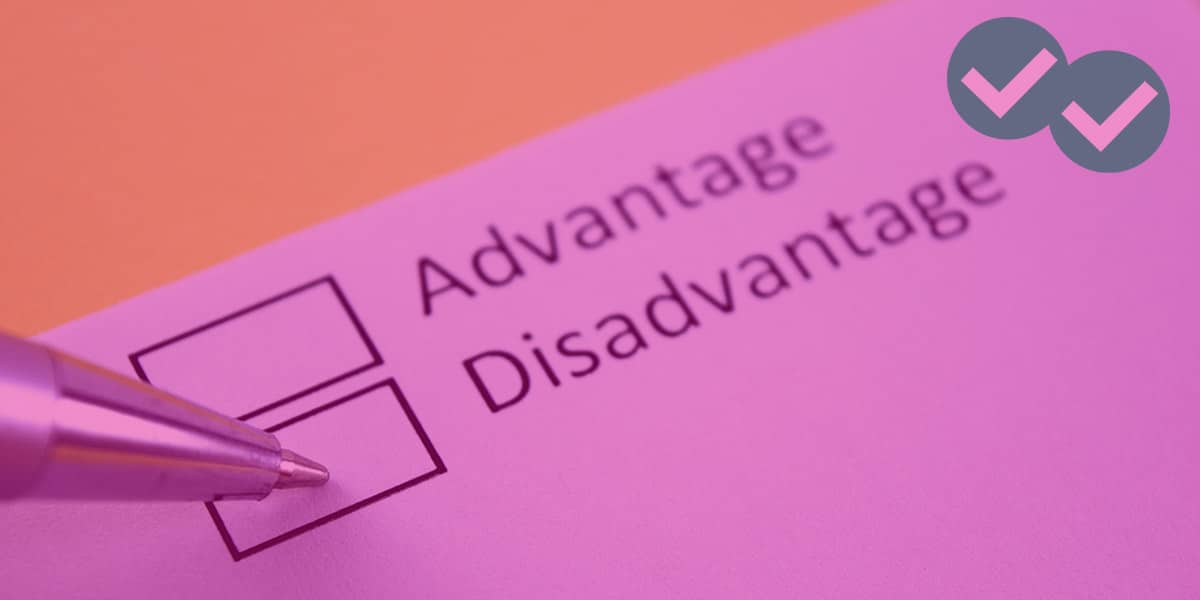
When you turn to IELTS Writing Task 2 (the formal essay) on test day, you may encounter an “advantage and disadvantage” essay. This type of essay asks you to evaluate both sides of an issue. Having the right vocabulary for IELTS Writing Task 2 essays is one key to increasing your band score. This is essay is no different. In this article, we’ll look at IELTS advantages and disadvantages essay vocabulary.
What is an Advantage/Disadvantage Essay on the IELTS?
An advantage/disadvantage essay is any essay that requires you to share both good and bad sides of an issue. They’re pretty easy to spot, because they almost always use the phrase “advantages and disadvantages” in the prompt.
Check out Eliot’s tips as he walks you through a sample advantages/disadvantages essay!
With those ideas in mind, here are a few things you should keep in mind while writing an advantages/disadvantages essay.
Both Sides
When you’re writing an advantage/disadvantage essay, you want to present both sides of the issue. Sometimes, but not always, the prompt will ask you to pick which side is stronger. Don’t make a recommendation about which side is better unless the prompt says to! In other words, don’t overthink this: if the prompt doesn’t ask you to pick a side, don’t. Just focus on describing the pros and cons of the issue.
Structure
The structure of an IELTS advantages/disadvantages essay should be simple, with four paragraphs:
- Introduction
- Advantages (OR disadvantages, whichever you have better ideas for)
- Disadvantages (OR advantages, if you wrote about disadvantages first
- Conclusion
The main thing to keep in mind is that you should separate advantages into their own paragraph and disadvantages into their own paragraph. It doesn’t matter which one comes first, but they should be distinct.
Ideas
It can be easy to get caught up in using the IELTS advantages and disadvantages essay vocabulary you’ve learned and forgetting to focus on the ideas. However, you should brainstorm ideas carefully at the beginning of your time to make sure that you have something to write about! Aim to share two advantages and two disadvantages in your essay.
IELTS Advantages and Disadvantages Essay Vocabulary
With that in mind, I’ll take a look at some words and phrase you can use for this essay type.
Before we get into specifics, though, let’s look at some basic terms for this section: synonyms for “advantages” and “disadvantages”:
- Pros/cons
- Benefits/drawbacks
- Positives/negatives
With those in mind, take a look at vocabulary words and phrases you can use to present each side!
IELTS Advantages and Disadvantages Essay Vocabulary: Advantages
- One advantage of X is…
- A primary advantage of X is…
- The positive aspects of X include…
- A/Another benefit of X is…
- An/Another advantage of X is…
IELTS Advantages and Disadvantages Essay Vocabulary: Disadvantages
- A disadvantage of X is…
- One drawback of X is…
- A negative aspect of X is…
- A negative consequence of X is…
- A/another drawback of X is…
Vocabulary and Phrases for Opinions (ONLY if Required by the Prompt)!
- The benefits of X far outweigh/exceed the drawbacks.
- The disadvantages of X far outweighs/exceeds the advantages.
Example of an IELTS Advantages and Disadvantages Essay
So what does this look like in practice? Take a look at a sample IELTS advantages/disadvantages prompt and a high-scoring essay written in response. If you want, you can use an IELTS essay response sheet and try your own response before checking the answer below!
The Prompt
The Response
One major advantage of streaming films in the home is that it removes barriers between customers and the films. Couples with children do not need to find babysitters to enjoy new cinema. Another benefit of streaming services is that, in many cases, the price of new films is already included in the monthly subscription cost. This means that more people are likely to watch the film at home, even if they were not interested enough to pay money directly to see it in the theatre.
Conversely, a negative consequence of streaming services’ popularity is that, if they reach a certain tipping point of popularity, cinemas may go out of business. Consumers have no incentive to go to the theatre to see the same films they can see in the comfort of their homes. This means that those employed by cinemas, from ushers to those working at concessions stands, may lose their jobs, which could have a knock-on effect on the economy. Another disadvantage of streaming services’ ubiquity is that some films may not be as easy to appreciate artistically on a small screen. By watching these films at home, consumers may be missing out on the director’s artistic vision.
On balance, there are both benefits and drawbacks to the recent rise in streaming services. The effects this trend has are primarily economic (on both individual and societal levels) and artistic.
Word count: 272





